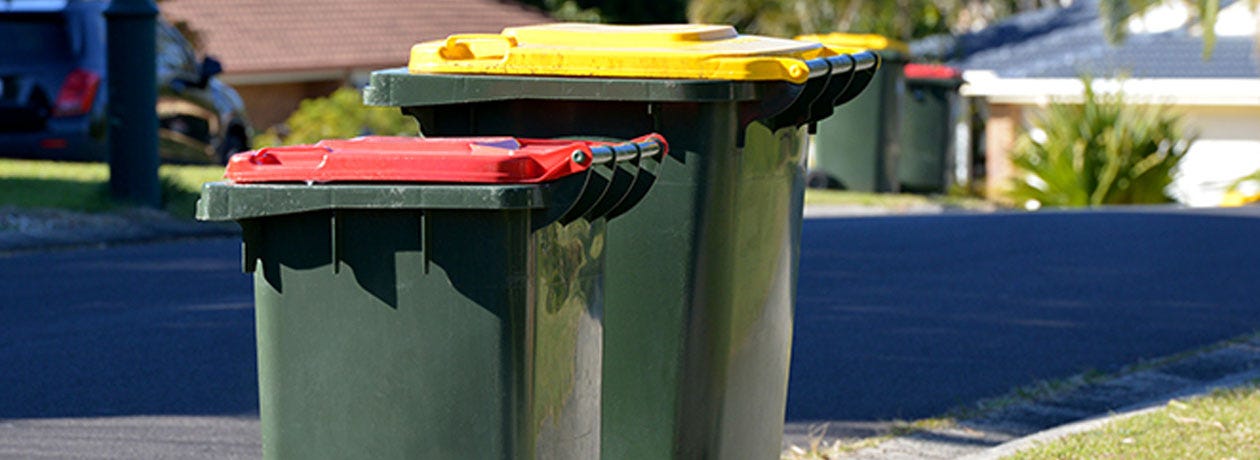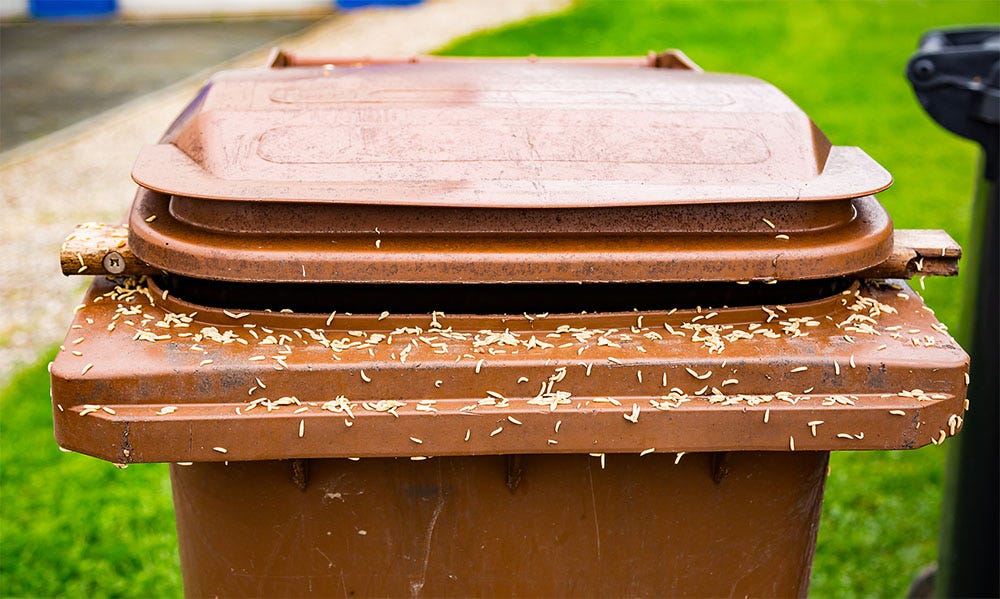How to Manage a Trash Can Maggot Infestation

Taking out the trash is a normal part of our everyday routine – it shouldn’t be something to dread. But during hot summer months, it’s not unusual for unwelcome pests to move in. When they do, your daily chores can become much more stressful.
If you find yourself faced with a maggot infestation in your trash cans, it’s important to act quickly. Luckily, we’ve got all the information you need to clean up this unfortunate situation, as well as tips to prevent it from ever happening again.
Why Do Maggots Infest Trash Cans?
When flies need a place to lay their eggs, they seek out spaces that offer warmth, protection, and of course, food. Trash cans offer all these things, making them a prime spot for insect breeding grounds. Rotting organic matter is a preferred food source for maggots and trash cans are full of it!
Plus, when warmer weather arrives, the space becomes hot and humid. This itself is very attractive to flies, but it also helps to enhance the odor of the food remnants inside, making it even more appealing to enter and lay eggs. Within a short time, the maggots hatch, grow into adult flies, and continue breeding. Soon a couple of maggots have turned into a full-blown trash can infestation.
How to Cleanup After A Trash Can Infestation
Cleaning up an infestation of maggots is by no means pleasant, but if you’re experiencing this issue, it’s a necessary evil. Follow these steps to get started:
- Start by removing all the trash from the can. It may be easiest to wait until your next scheduled trash collection day. If you want to speed things up, you could also remove all the trash bags and deliver them to the dump yourself.
- Be sure to remove any loose items or debris from the inside of the trash can that may not be contained inside of a trash bag.
- Kill the maggots and insects remaining inside the can using boiling water, a vinegar solution or TERRO® Garbage Guard™. Jump to the next section to learn more about the pros and cons of each method.
- Once the insects are taken care of, clean and disinfect the inside of the trash can. Use a brush or sponge mop and hot soapy water to scrub. Be sure to get into every nook and cranny to remove any residue.
- Pour out any soapy water and rinse the trash can using your garden hose.
- Thoroughly dry the trash can using towels, or allow to air dry completely before putting any bags in.

Eliminate and Prevent Trash Can Infestations
An important step of cleaning up after an insect infestation is to kill the invaders and prevent the infestation from returning. Here are a few common methods for eliminating trash can insects:
Boiling Water
One way to kill trash can insects is with boiling water. Carefully pour the water down the inside walls of your trash can. The boiling water will kill all the insects it touches instantly. The downside to this method is that it does nothing to prevent insects from returning. In fact, if you don’t thoroughly dry out your trash can afterward, the humidity created inside the can will quickly attract the flies back.
Vinegar
If you want to try a more natural method, try a solution of one part vinegar with three parts boiling water. This solution will kill the live maggots and will also remove the fly-attracting odors from your trash can, temporarily preventing them from laying eggs. However, for this method to be effective, you need to repeat the process at least once per week which can be time-consuming.
The TERRO® Solution
If you’re constantly battling insects in your outdoor trash cans or dumpsters, TERRO® Garbage Guard™ is just what you need. Unlike the boiling water and vinegar methods, Garbage Guard™ is designed for controlled release. A single pod offers up to 4 months of protection – that means an entire summer free of maggots! Simply adhere the compact pod to the inside of your trash can lid.
Once in place, the pod releases an odorless, deep-penetrating vapor that kills all visible and hiding insects inside your garbage bin. Garbage Guard™ not only works on maggots, but also a wide variety of flying and crawling insects, including flies, gnats, mosquitoes, cockroaches, and more. In addition to killing existing insect infestations, it will also prevent new ones for as long as it’s in place. We like the sound of that!
